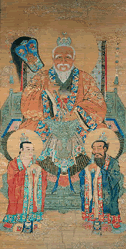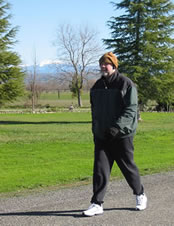We sometimes feel the need for dramatic changes in our lifestyle for a a variety of good reasons including a dissatisfaction with the results of previous actions and habits. We want to change our character, behaviors, habits, thinking, or values so as to effect a "Transformation."
I recently reread a book by Baron Baptiste, a influential and popular yoga master, titled "40 Days to Personal Revolution: A Breakthrough Program to Radically Change Your Body and Awaken the Sacred Within Your Soul' (Fireside, Simon and Schuster, 2004). Yogi Baptiste gives an explanation of a plan for personal transformation, and includes his views on the guiding principles (Laws) for such significant changes:
"The Twelve Laws of Transformation
1. Seek the Truth
2. Be Willing to Come Apart
3. Step Out of Your Comfort Zone
4. Commit to Growth
5. Shift Your Vision
6. Drop What You Know
7. Relax with What Is
8. Remove the Rocks
9. Don't Rush the Process
10. Be True to Yourself
11. Be Still and Know
12. Understand that the Whole is the Goal"
- Baron Baptist, 40 Days to Personal Revolution, 2004, pp. 5-45.
Over the years, I have also collected many quotations regarding the power of the will in human action. Willpower is a key component of successful personal transformation. The will is very much like a muscle: with exercise it gets stronger, it needs time for rest and recuperation, it needs to be feed properly with behavioral and mental nutrients, it needs some stretching and flexibility work, and needs to be cross-trained to develop full and responsive power.
I think some of the guiding techniques for personal change include:
1. A realistic and truthful assessment of our physical, mental, emotional, and social
self-potential and possibilities.
(Baptiste: 11, 10, 1, 5)
2. A clearly articulated vision and goals for the future.
(Baptiste: 12,5)
3. A detailed action plan, objectives and timetable needed to accomplish the goals.
(Baptiste: 12, 5, 1)
4. A wholehearted commitment to and belief in the action plan.
(Baptitste: 4, 2)
5. Direct efforts on a daily basis to fulfill the action plan.
(Baptiste: 4, 11, 10)
6. Having patience, steadfastness, determination, courage, and flexibility.
(Baptiste: 7, 9)
7. Acknowledging and breaking through one's inner resistance to change, abandoning
or tearing away from one's past actions.
(Baptiste: 2, 3, 6, 8)
8. The regular review, evaluation, and realistic assessment of progress on a weekly
and monthly basis.
(Baptiste: 1, 3, 8)
We also need to take advantage of techniques to manage the unconscious and well as conscious forces that comprise our inner life. Try exploring techniques such as visualization, repeated affirmations, guided meditations, rituals, art, hypnosis, neuro-linguistic programming, music, etc.
Lifestyle Advice from Wise Persons















